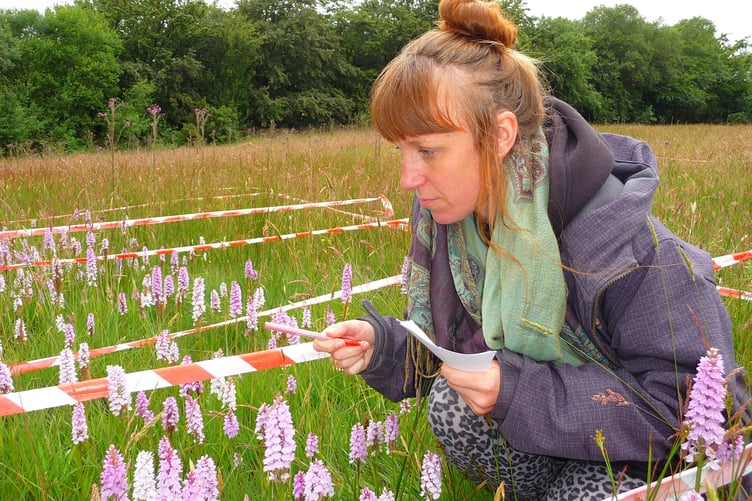Volunteers surveying wild flower meadows near Tregaron have counted 2,270 orchids, 69 per cent more than the number recorded last year.
The site, at appropriately named Orchid Meadows in Ceredigion, is a nature reserve and glamping site with a cottage, yurt and glampavan.
The orchids were heath spotted orchids with the scientific name of Dactylorhiza maculata subspecies ericetorum.
They range in colour from almost white to pink to deep purple and cope well with the heavy, damp, acid soils common in West Wales.
Nevertheless, populations take a long time to establish and can be reduced or lost altogether by modern farming methods relying on chemicals. The meadows at this small-holding have, over the past three years, been returned to nature-friendly management.
Site owner Stephen Hounsham said: “Wild flower numbers obviously fluctuate year on year due to weather patterns and other factors but we think an increase of this magnitude shows that sympathetic meadow management here is paying off. It is good news for our glamping guests, who often come here to immerse themselves in nature.”
As well as heath spotted orchids, smaller numbers of lesser butterfly orchid and broad-leaved helleborine were also recorded on-site. The orchids will be providing a colourful spectacle until late July.
Orchid Meadows offers short breaks and longer holidays in Tawny Cottage, Red Kite Yurt and Goldfinch Glampavan. Guests are attracted from across Wales and England. People have even stayed who live at Aberystwyth, just 30 minutes away, providing the perfect example of a stay-cation.
The meadows are managed traditionally with no artificial fertilisers or pesticides.
They are cut for hay in late August after most wild plants have flowered and set seed. The bales are used at a nearby horse training centre for feed and bedding. Orchids spread slowly underground naturally but seed is also collected from the fields before cutting and then scattered and trodden in the following spring.
The bulk of the orchids were found in a field called Evening Meadow, where numbers rose 90 per cent on last year’s total. However, next door in Morning Meadow numbers were actually 20 per cent down, thought to be due to intensive grazing by horses over the winter in very wet conditions. This churned up the ground and added manure, raising nutrient levels to probably beyond that preferred by wild orchids.
The orchid count was carried out by glamping guests and members of the Lampeter Permaculture Group, which promotes food production carried out in harmony with nature.





Comments
This article has no comments yet. Be the first to leave a comment.